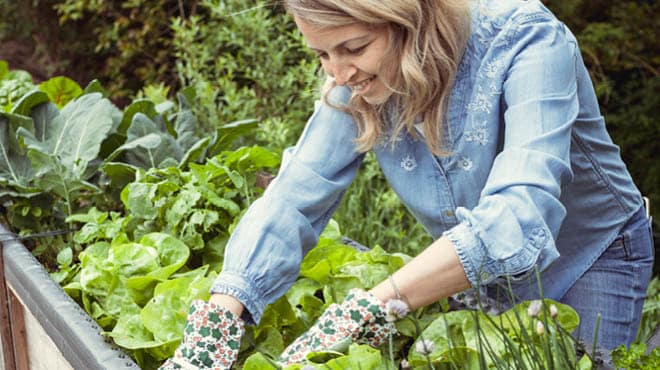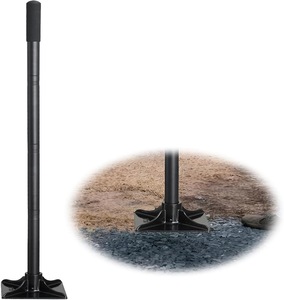The Comprehensive Guide to Horticulture: Discover the Benefits of Various Styles and Strategies
Gardening incorporates a varied range of designs and methods, each offering special benefits customized to individual choices and environmental contexts. As we explore these various styles, it comes to be obvious that the choices made can dramatically affect both the yard's health and wellness and its payment to the surrounding atmosphere.
Recognizing Horticulture Essentials
Understanding the essentials of gardening is essential for cultivating a flourishing and sustainable garden. An effective horticulture venture begins with a strong foundation of expertise concerning dirt, plant selection, and environment factors to consider. Healthy soil is the keystone of any yard; it offers essential nutrients, water retention, and a habitat for valuable bacteria - Gardening. Examining soil pH and nutrient levels can lead amendments to optimize plant development.
Picking the right plants is equally essential. Comprehending their certain demands-- such as sunlight, water, and spacing-- ensures compatibility with the local climate and soil conditions. This selection process need to also consider the growth practices and lifecycle of plants, permitting a well balanced and aesthetically pleasing garden.
Moreover, effective watering practices are vital. Over-watering and under-watering can both bring about plant anxiety and illness. Carrying out a timetable based upon seasonal changes and plant needs can enhance water efficiency.
Popular Horticulture Styles
What specifies the significance of preferred horticulture styles? These designs encapsulate diverse visual principles, useful needs, and ecological factors to consider, inevitably showing the gardener's personal vision. Among one of the most prominent designs is the cottage yard, identified by its casual design and a dynamic array of blossoms and vegetables. This approach highlights an unified blend of shade and structure, producing a welcoming environment.
Alternatively, the formal yard symbolizes proportion and order, usually featuring geometric patterns and meticulously trimmed bushes. This style interacts elegance and class, with very carefully picked plants that reinforce an organized aesthetic.
The Japanese garden supplies a peaceful and reflective experience, utilizing all-natural components like water, rocks, and plants to produce a tranquil atmosphere. It concentrates on simplicity and equilibrium, motivating contemplation.
In addition, xeriscaping has gotten appeal, especially in deserts (Gardening). It prioritizes drought-resistant plants and efficient water usage, promoting sustainability while enhancing landscape appeal
Benefits of Container Gardening
Container gardening uses a wide range of advantages that make it an enticing option for both newbie and experienced gardeners alike. Among the key benefits is flexibility; containers can be positioned in numerous areas, allowing gardeners to enhance sunshine direct exposure and develop aesthetically appealing arrangements. This versatility makes it feasible to yard precede where standard in-ground horticulture might not be feasible, such as balconies, outdoor patios, or metropolitan settings.
In addition, container horticulture gives better control over soil conditions. Gardeners can personalize the dirt mix to match specific plants, guaranteeing optimum drain and nutrient accessibility. discover this This is specifically beneficial for people residing in locations with inadequate or infected dirt.
One more considerable benefit is the lowered danger of pests and conditions. Container plants can be kept look at this website an eye on more easily, and any type of issues can be addressed immediately. Moreover, this approach can lessen the spread of invasive species.
Sustainable Horticulture Practices
Sustainable gardening techniques are necessary for promoting environmental wellness and enhancing biodiversity in our environments. These practices prioritize eco-friendly equilibrium, resource conservation, and the use of organic approaches to minimize unfavorable ecological impacts. By utilizing techniques such as composting, gardeners can minimize waste while enriching soil wellness, thus cultivating a flourishing yard community.
Water conservation is an additional critical element of sustainable horticulture. Techniques such as rainwater harvesting, drip watering, and the usage of drought-resistant plants can considerably minimize water use while ensuring that plants get appropriate dampness. Incorporating indigenous plant varieties right into yard styles supports regional wildlife and reduces the need for chemical fertilizers and chemicals, which can be harmful to the environment.

Eventually, lasting horticulture practices not only contribute to much healthier yards yet also promote an even more resistant environment, providing long-lasting advantages to both the garden enthusiast and the surrounding neighborhood.
Tips for Effective Gardening
To cultivate a successful garden, gardeners must focus on mindful preparation and thoughtful execution of their gardening approaches. Begin by analyzing the local climate and dirt conditions, as these aspects considerably affect plant selection and growth. Pick plants that are fit to your environment, taking into consideration indigenous varieties that will certainly love very little treatment.
Executing a well-structured design is vital (Gardening). Make use of friend growing techniques to promote biodiversity and natural insect control, while making certain each plant has appropriate room for growth. This not only improves looks yet likewise boosts general plant health and wellness
Normal maintenance is key to an effective garden. Establish a constant routine for watering, weeding, and feeding. Mulching can help maintain moisture and subdue weeds, while likewise adding raw material to the soil.
Regularly keeping an eye on plant health and you could check here development will certainly enable for prompt interventions. Be open to discovering and adjusting; gardening is a continual process that profits from experience and trial and error.
Final Thought


In summary, the expedition of varied gardening designs and techniques exposes their multifaceted benefits, adding to both visual charm and ecological wellness. Container horticulture provides versatility and availability, while lasting techniques boost ecological stewardship. By incorporating different strategies and approaches, gardeners can optimize their efforts, promote biodiversity, and create useful outside rooms. Ultimately, this thorough guide functions as an important source for cultivating successful horticulture experiences, fostering a much deeper connection with nature and the surrounding ecosystem.